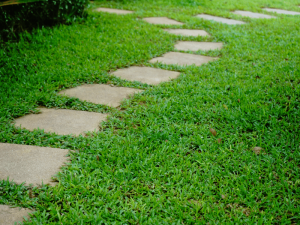How to Build a Shed Base
This page may contain affiliate links. If you buy a product or service from an affiliate such as Amazon after clicking a link on this website, we earn a commission from qualifying purchases.
The majority of homeowners have some kind of structure in their gardens, whether it’s a shed, log cabin or form of bike storage; but many of us don’t consider the important steps that go into the planning of a new shed.
No products found.
We just assume that it gets delivered and set down where we want it and that’s it, we can start to fill it up with your lawnmower, old paint you may never use again and other essential garden equipment.
Unfortunately, it isn’t as simple as that, but the process is by no means as difficult as some garden projects like building a brick barbecue, raised beds or a garden pond.
One of the biggest decisions is over the types of sheds you can buy in terms of the material, size and your budget; but specialist companies are able to advise on the best options for you.
The next decision you have to make is over the base for your shed so that you have the best place for it and the ground is ready to have the load placed upon it, something A LOT of homeowners forget to consider.
To ensure that you have the best conditions for your new shed, follow this guide and you should have the kind of location and structure that you can be proud of and an area where you can go and get on with your essential outdoor tasks:
Location
- Your first point of consideration is for the location of your shed, but before you get carried away with planning the specific area it’s worth bearing in mind that you will need to have some form of access for the delivery company to actually unload your new shed.
- You will then need to factor in that you will need access to the shed, too, so that you can apply your wood stain and varnish whenever it is needed, along with any paint or essential maintenance.
- Having organised all of that in your own mind, you can then start to consider the location for the shed. It makes sense to locate it in an area that you infrequently use and that wouldn’t necessarily be in your eyeline if you were sat outside enjoying the sunshine; but it also makes sense for it to be somewhere that a security light can come on and that you would see from the house if an intruder was present.
- It’s important that there is a supply of natural light if you’re intending to use the shed for a workshop so that you can work comfortably without having to use electricity which will obviously increase your monthly bill. On a similar note, you should also factor in an external electricity supply and whether you have one that is already in place and sufficient or whether you will have to install one.
Base Material
- You have two main choices over the base material – the area that the shed will be built on. The first of which is a concrete base which would be one solid point and ideal for when the shed’s primary focus is to be a workshop so that the ground is stable and secure.
- The second option is a slab-based one which would enable you to move the shed and its location down the line if you chose to. A concrete base is more stable but it does mean that you would be left with an area of concrete if you ever had to move the shed to a better or more secure area.
Creating the Base
- Having planned the location of your shed and decided on your base, it’s time to start preparing it. Start by marking out the full area for your shed by using the dimensions of your new structure and ensuring that you have extra space around it.
- The next step is to ensure that the ground is level. A concrete base would require a level of hardcore and then a layer of concrete that is completely flat otherwise your possessions are going to slide to one end! With a slab base you would need to prepare the ground using sand and cement to securely place the slabs, and then use a spirit level to ensure that they are all lined up.
- A wooden framework could be an advisable installation to ensure that the ground is kept in the shape you need it to be. Placing wood around the edges of your base and then screwing them together will give you guidelines so that you can concrete right up to them or use them as borders for your slabs.
And that’s all there is to it. Building a shed isn’t really that complicated a process – there are certainly more challenging projects in DIY and renovations – but preparing the ground and everything else that is relevant before your shed arrives will ensure that the project runs much more smoothly than having to adapt after delivery or installation.
Featured image by Sue Rickhuss from Pixabay


